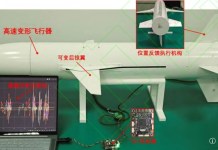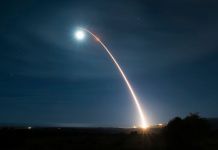Australia’s Defense Department has decided to remove Chinese-made surveillance cameras from its offices over national security fears. It comes after an audit found 900 pieces of surveillance equipment were built by companies partly owned by the Chinese government.
At least 913 cameras, intercoms, electronic entry systems, and video recorders developed and manufactured by Chinese companies Hikvision and Dahua have reportedly been found in various Australian government estates, including the Defense Department and the Department of Foreign Affairs and Trade.
Hikvision and Dahua are partly state-owned Chinese companies that have also previously been implicated in the alleged human rights abuses and mass surveillance of Uyghurs in China’s Xinjiang Uygur Autonomous Region (XUAR).
Australian Defense Minister and Deputy Prime Minister Richard Marles said on February 9 that the government would find and remove the cameras from any defense locations to make them completely secure.
“This is an issue – we’re doing an assessment of all the technology for surveillance within the defense estate, and where those particular cameras are found, they’re going to be removed,” Marles told Australian Broadcasting Corp.
“I don’t think we should overstate it, but it’s a significant thing that’s been brought to our attention, and we’re going to fix it,” he further said.

As for the cameras found in other government buildings, Australia’s Attorney General Mark Dreyfus said that the government will review whether those cameras need to be removed.
However, the shadow Minister for Cyber Security for the Liberal Party, James Paterson, requested the audit, saying that cameras in all government offices need to be removed, as Australia has “no way” of knowing whether data collected by these Chinese-built devices is being handed over to the Chinese intelligence agencies.
“We urgently need a plan from the government to rip every one of these devices out of Australian government departments and agencies,” Paterson said.
“We would have no way of knowing if the sensitive information, images, and audio collected by these devices are secretly being sent back to China against the interests of Australian citizens,” Paterson said.
China’s National Intelligence Law of 2017 requires organizations and citizens to “support, assist and co-operate with the state intelligence work.”
The legislation was a significant consideration for the Australian government’s ban in 2018 on Chinese telecom companies, including Huawei and ZTE, from the country’s 5G network, in response to which China imposed trade restrictions and tariffs on Australian exports such as coal, lobsters, and wine.
Meanwhile, a Hikvision spokesperson said that it is “categorically false” to represent the company as a threat to national security.
“No respected technical institution or assessment has come to this conclusion,” the spokesperson said, adding that the company cannot access end users’ video data and, therefore, cannot transmit it to third parties.
Expert Talks
EurAsian Times asked retired Indian Army officer Lt Gen (Dr) R S Panwar, who served in the Corps of Signals, whether a manufacturer can access the feed from these cameras.
“As long as there is a physical network connection available from the manufacturer to the camera, from a technical standpoint, it would be wise to presume that all data is accessible to the manufacturer, notwithstanding any claims to the contrary that access has been barred through software controls,” Panwar explained.
Panwar further said, “In the view of the often-quoted Chinese National Intelligence Law of 2017 coupled with the tight state control in China over the private sector in general, the only prudent presumption from a national security perspective is that all data is being made available to the Chinese intelligence agencies.”
Backdoors Discovered In Chinese-Made Cameras
The Australian government’s decision comes after similar moves by the UK and the US governments last year.
In November 2022, the UK government banned the use of cameras built by Hikvision at “sensitive” sites, citing “the threat to the UK and the increasing capability and connectivity of these systems,” without any further specification.
The US Federal Communications Commission (FCC) later banned telecommunications and video surveillance equipment from several prominent Chinese brands, including Hikvision and Dahua, to protect the country’s communications networks.
Serious security flaws have been detected in the past in cameras produced by both of these companies, which could be exploited to access images and data remotely and without the permission of their owners.
For example, in 2021, the Italian state broadcaster Rai revealed that data collected from a Hikvision camera installed on its premises was sent to a server in China — apparently due to a ‘glitch.’ Rai also revealed that 100 cameras at Rome’s main airport had tried to connect with unknown computers multiple times.
Also, in 2017, an anonymous researcher discovered a significant vulnerability across many Dahua products. The researcher found a backdoor that allowed remote unauthorized admin access via the web. While Dahua said that it was an error (‘coding issue’) and not done intentionally, the researcher, based on his analysis, expressed skepticism over the “error claim.”
“All cameras have vulnerabilities,” says Conor Healy of the US computer security website IPVM. “What makes some Chinese cameras different is that there are more security flaws. Chinese law requires that companies report vulnerabilities to the government within two days. The Chinese government could inevitably have the opportunity to use them.”
Reports suggest that these cameras could be accessed remotely to spy on citizens, police stations, universities, and hospitals for valuable intelligence.
For example, the cameras can be used to monitor the comings and goings at government departments, where officials make important policy decisions related to foreign and security policy. In-built microphones would even enable the conversations to be monitored.
Precision Missile Strikes Using Surveillance
In 2015, a Hikvision engineer by the name of Li Yanxiang wrote an article about his work with weapons experts from the General Armament Department of the Chinese People’s Liberation Army (PLA), explaining how surveillance technology can be used for military purposes.

Li said his work involved using surveillance technology to improve the accuracy of the missiles fired from surface-to-air and surface-to-surface systems using both fixed and moving launchers.
“[We should] use surveillance cameras to capture the moment the missile reaches or misses the target and collect the wind speed, temperature, and air humidity. Then we can calculate whether the angle of incidence is correct and in which angle the missile has the strongest force of penetration/lethality,” Li wrote.
Li said the surveillance system also needs to collect data on the land where the soldiers shoot the missile and where the target is, the radius of the explosion, and whether a missile is dumped.
Li then talked briefly about the surveillance system that Hikvision would supply.
“We need to use high-speed cameras, which can capture at least 200 to 500 frames per second. With a lot of the footage, we need to build a local memory server and power supply.”
This would mean that surveillance technology could be used for precision missile strikes over strategic locations such as important government centers or industrial areas, etc.
- Contact the author at tanmaykadam700@gmail.com
- Follow EurAsian Times on Google News




